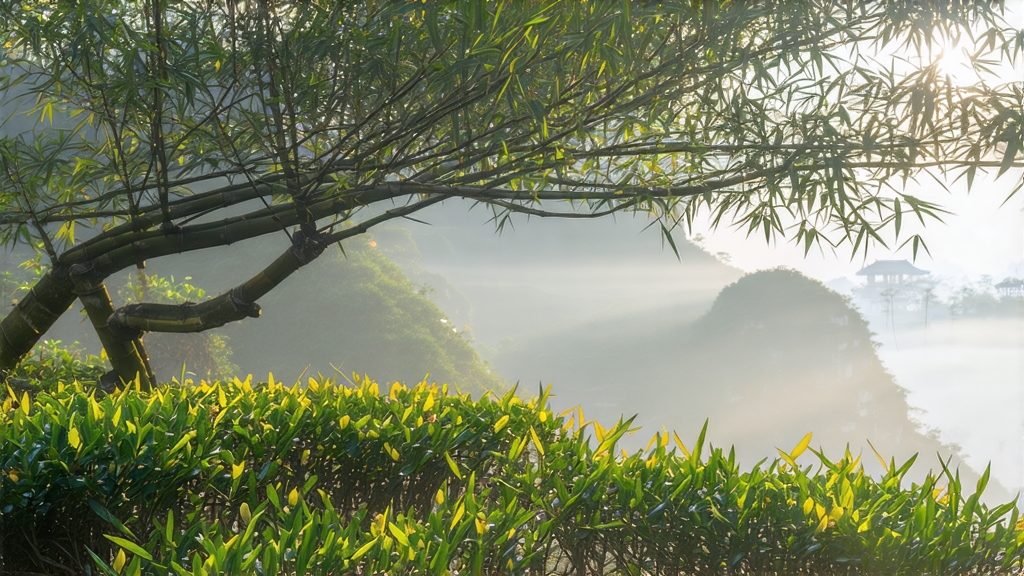
Tucked away in the cloud-veiled peaks of Sichuan’s Meng Ding mountain range, Meng Ding Huang Ya—literally “Meng Ding Yellow Bud”—is the quiet aristocrat of Chinese tea. While green teas grab export headlines and pu-erhs fill auction catalogues, this yellow tea has survived for twelve centuries on little more than mist, patience, and the stubborn memory of a few local families. To understand it is to watch Chinese tea-making slow itself down until chemistry turns into poetry.
History: from imperial altar to exile
The first written record appears in 808 CE, when the Tang dynasty’s “Cha Jing” already lists Meng Ding as a tribute district. By the Song, the buds were wrapped in silk, sealed with wax, and couriered along the Min River to Chengdu, then by imperial post-horses to Kaifeng. The Qing emperor Qianlong’s personal ledger notes 2.3 kg of “Meng Huang” arriving in 1742, a quantity so small it was measured by the individual bud. When the last imperial court fell in 1911, the tribute system vanished; farmers replaced the delicate yellowing process with faster green-tea kill-green, and Huang Ya slipped into obscurity. Only in 1959 did a Sichuan tea engineer named Wang Zhongshu rediscover an 84-year-old master who still remembered the “men huang” (sealed yellowing) step. A 1.2 mu experimental plot was replanted on the original 800 m elevation, and the variety was formally revived for state banquets. Today fewer than 15 hectares remain, all on Meng Ding’s northern cloud slope.
Micro-terroir: where clouds taste like stone
Meng Ding is the easternmost thrust of the Tibetan Plateau’s foothills; warm Sichuan basin air meets cold plateau wind, creating 280 foggy days a year. The bushes grow in a 30 cm layer of phyllite-derived soil so porous that rainwater drains instantly, forcing roots to mine minerals from fractured bedrock. The local cultivar, “Meng Ding #9,” is a Camellia sinensis var. sinensis landrace with unusually small cell walls; under low light, it accumulates theanine instead of catechins, giving a natural sweetness that survives the extra oxidation of yellowing.
Plucking: the lunar calendar still rules
Harvest begins each year on the traditional day “qing ming qian 15”—fifteen days before the Tomb-Sweeping Festival—when night temperatures hover at 9 °C and buds are still tightly closed. Only the “single flag, one bud” standard is accepted: a 12–15 mm bud accompanied by an unfurling leaf the size of a fingernail. Experienced pickers finish before 9 a.m.; any later, rising sap increases grassy aromatics that resist yellowing. Roughly 42 000 plucks yield 1 kg of finished tea.
Craft: the art of controlled forgetting
Yellow tea is often described as “green tea with one extra step,” but that step is a labyrinth of micro-decisions. After picking, the buds are spread on bamboo trays for six hours of withering under 75 % relative humidity. Then they are wok-fired at 85 °C for exactly 180 seconds—long enough to destroy leaf enzymes, short enough to keep 8 % residual moisture. What follows is unique: the “men huang” (sealed yellowing). The leaves are wrapped in steamed cotton cloth, then buried inside a 25 cm-thick bamboo chest lined with local cedar. Core temperature is allowed to climb to 38 °C over 48 hours; every 12 hours the chest is opened, the cloth gently turned, and the aroma checked for the mythical “green-gone-corn-silk” note. A second firing at 70 °C fixes the newly formed carbonyls, and the tea is finally dried above a charcoal brazier scented with longan wood. Total production time: seven days. Loss of mass: 68 %. The result is a leaf the colour of antique parchment and a liquor that smells like mountain orchards after rain.
Chemistry: the slow birth of norisoprenoids
Gas-chromatography studies at the Sichuan Tea Research Institute show that during men huang, linalool oxides increase 3.4-fold, beta-ionone doubles, and 3-methyl-butanal—responsible for cocoa nuance—appears only after 36 hours. These norisoprenoids are absent in green Meng Ding teas, proving that the yellowing phase is true micro